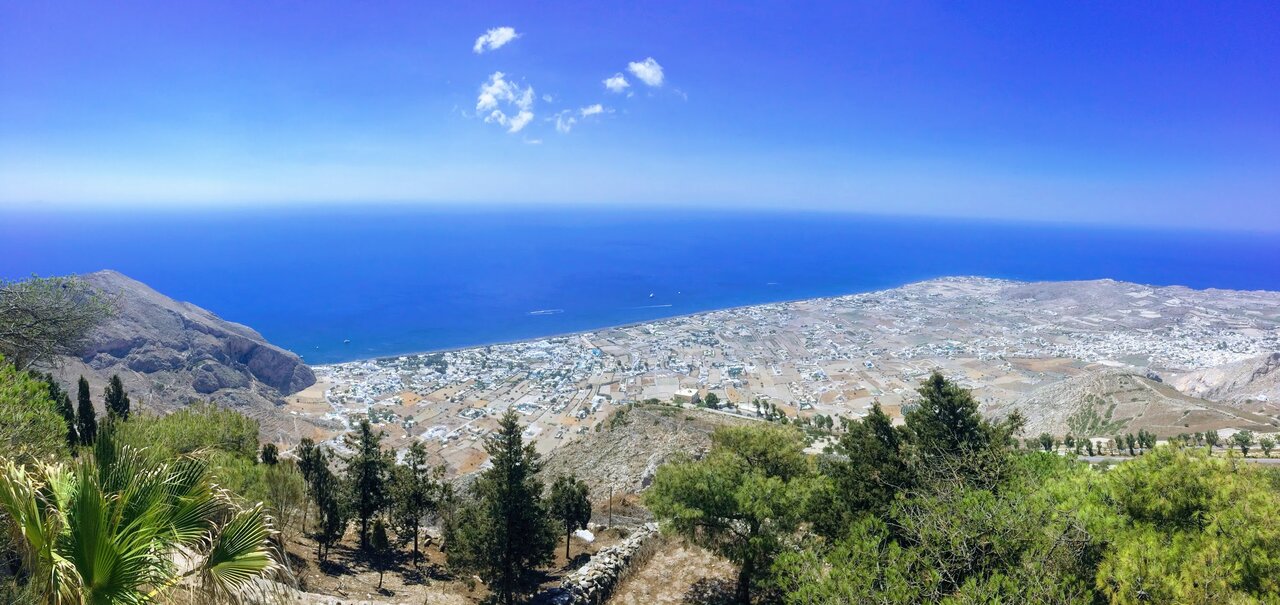Santorini is one of the southernmost islands of the Cyclades group, along with the small island of Anafi. Santorini is particularly famous for its volcano, the largest eruption of which occurred about 3,550 years ago, destroying the island and causing a tsunami that destroyed the Minoan civilization in Crete. Before this eruption, the island was called Stroggili because of its round shape, but the eruption resulted in two separate islands, Tirasia and Aspronisi. These two islands, together with Santorini, form a circle in the center of which is the caldera. After another volcanic eruption in the seventeenth century, two more small islands, Nea Kameni and Palia Kameni were formed in the caldera.
The total area of Santorini is 76.19 km2, and the highest point is Profitis Ilias at an altitude of 567 meters. According to the 2011 census, the island has a population of 15,260, and the number of visitors in summer can reach 3 million people.
The island may have a dry climate, but its inhabitants have managed to successfully grow high-quality crops such as cherry tomatoes, cucumbers, beans, and many others popular throughout the country. Wine production on the island is also highly valued, as some of its vineyards date back to ancient times and produce wines such as Assyrtico, Nichteri, and Vinsanto, which are very popular and have been celebrated all over the world.
Santorini is an island with a rich history dating back to ancient times. The ruins of an ancient civilization were discovered in 1963 in the Akrotiri area of the island, which gave more information about the civilization that inhabited Santorini in 2000 BC before they were buried under volcanic ash in 1650 BC.
With its unique landscape, its long history, and, of course, its world-famous sunset, Santorini is an island that is at the top of national and international rankings.
Santorini Island
February 22, 2021
0 comment


Comment (0)